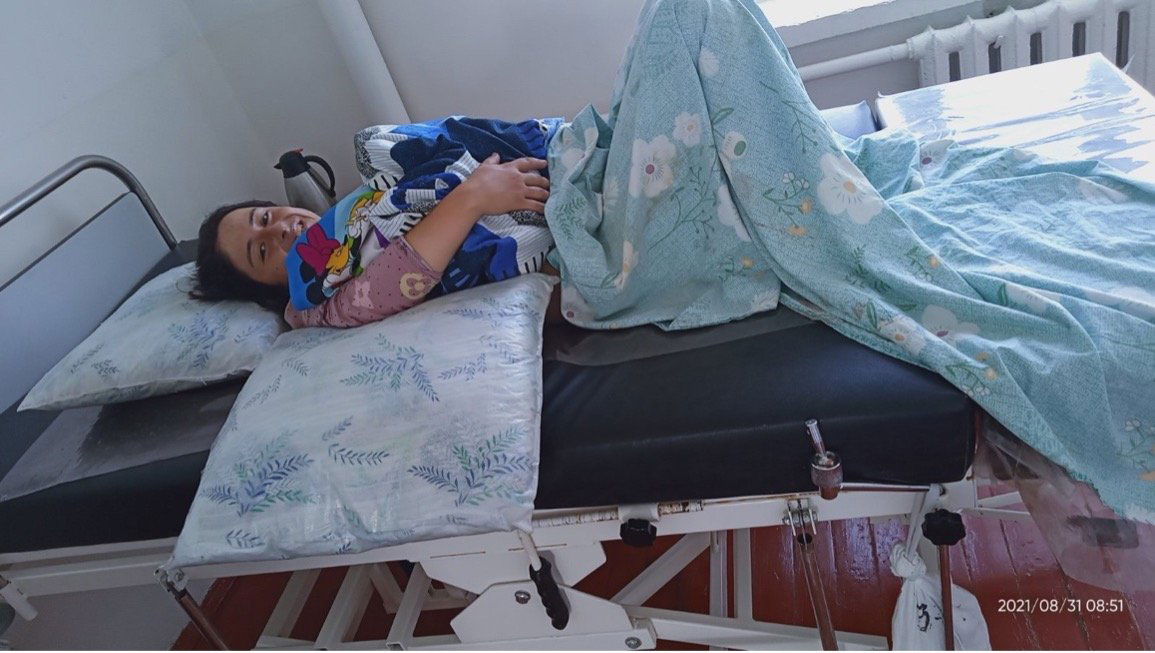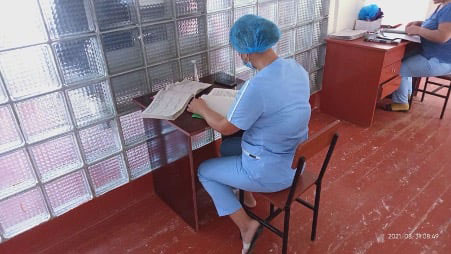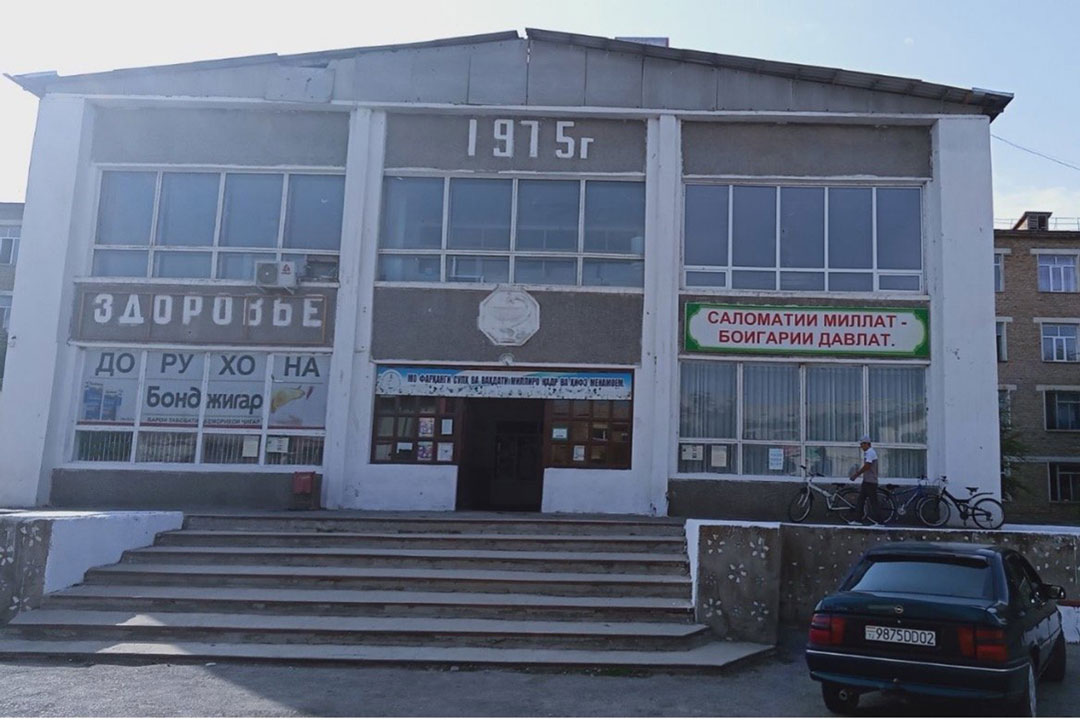Towards universal coverage of maternal health services in Tajikistan
Nozanin is a secondary school teacher and lives in the relatively prosperous region of Sughd, with better access to maternal health services than is found in other regions. However, medical costs are excessive for most people in the country, especially during COVID-19.
- 26 October 2021
- 6 min read
- by WHO

Twenty-five-year-old Nozanin clutches her swaddled new-born in her arms. She has given birth to her second child at the Central District Hospital in Zafarabad. She smiles, assured that her baby is healthy and that, this time, she will be leaving the hospital without a staggering medical bill.
“I was hospitalized for delivery in the Central District Hospital, with referral from my family doctor. All the costs of delivery services in the hospital were covered by public funds. I remember that during the previous pregnancy there was no such simple, predictable and cost-effective scheme for providing medical care to pregnant women.”

In Tajikistan, an estimated 47% of people live on less than US$1.33 a day. Almost two-thirds of the total health expenditure in the country comprises out-of-pocket payments – payments that continue to push households below the poverty line. About a third of people (33.1%) currently benefit from free health services provided through a government scheme, which includes maternal and childcare. For many people, access to life-saving treatments and medication is not available to them.
Nozanin is a secondary school teacher and lives in the relatively prosperous region of Sughd, with better access to maternal health services than is found in other regions. However, medical costs are excessive for most people in the country, especially during COVID-19. Many households in Tajikistan rely on money sent by close relations working abroad and are now receiving only a fraction of these remittances. More than 80% of these households spend the little money they receive on food and other immediate and basic needs. Twenty percent of families are not able to afford medical care. Women, in particular, often struggle to afford costly treatments, which could lead them to forgo lifesaving prenatal and postnatal care.
Maternal and child mortality
Maternal and child mortality rates in Tajikistan are the highest in the Eastern Europe and Central Asia region. Although the maternal mortality rate is steadily decreasing, Tajikistan maternal mortality currently stands at 32 deaths per 100,000 live births. The neonatal mortality rate was reported as 15 per 1000 live births in 2017, approaching the global target of 12 per 1000 live births. A contributing factor to these health outcomes is the poor quality of maternal and emergency obstetric care, compounded by the lack of a functioning referral system and means of transport, especially in rural areas. Substandard quality of care for mothers can be harmful to them and their new-borns. Reducing maternal and child mortality is a top priority for the government.
Benefits of access to maternal health care
Free maternal healthcare services offer more than financial protection. Maternal deaths represent only a small fraction of the burden of maternal morbidity. For every death caused by adverse events during pregnancy, 20 to 30 women experience acute or chronic morbidity, affecting their health further along the life-course. The lasting benefits of maternity care affect both the woman and the child. Babies of mothers who do not get prenatal care are three times more likely to have a low birth weight and five times more likely to die than those born to mothers who do get care. Medical professionals can identify treatable complications early when they see mothers regularly, such as infections, anaemia preeclampsia, ectopic pregnancies, malnutrition and depression. Doctors and nurses can also talk to pregnant women about things they can do to give their unborn babies a healthy start in life.

Have you read?
The Basic Benefit Package (BBP)
Despite the major benefits of maternity care, only 64% of women aged 15-49 years attend antenatal care at least four times during pregnancy. Accordingly, the government of Tajikistan has developed several health policies and programmes to overcome the challenges, defining and piloting essential health services, with the aim to include more people until there is universal access. This includes the Basic Benefit Package (BBP), which has been piloted as part of a larger programme in the region where Nozanin lives. The indispensable function of the BBP is to reduce or eliminate out-of-pocket payments for all essential services – with sustainable funding. The features of the BBP are communicated to all citizens, including their rights and entitlements to health services, service access responsibilities and co-payments and referral options.
“The first time I visited my family doctor after I had learned I was pregnant again, he explained to me, in detail, how I can benefit from the BBP and he gave me some brochures with more information. I was very happy to learn about the package and visited the health facility more than four times during my pregnancy to receive tests and examinations free of charge. I even received iron supplements with folic acid for free. Each time I would go to the health facility, they told me my baby was developing well, which was such a relief.”
The BBP is now being rolled out across the entire country and has already been expanded to 31 out of 65 districts. Given the country’s limited fiscal space and the impact of the COVID-19 pandemic, it is challenging to ensure the package’s sustainability. However, the government is steadily increasing domestic spending on health. Health expenditure as a share of GDP increased from 4.8 % in 2004 to 7.2 % in 2018. The government is also collaborating with partners on wider reforms to advance universal health coverage and strengthen primary health care.

SDG3 Global Action Plan partnership in Tajikistan
Under the Global Action Plan for Healthy Lives and Well-being for All (SDG3 GAP), 13 health, development and humanitarian partners have committed to working purposefully together to support countries in achieving the health goals under the 2030 Agenda, including goal 3.8 on universal health coverage.
The SDG3 GAP collaboration in Tajikistan is focused on advancing sustainable health financing reforms for PHC (see case study: Tajikistan). Signatory agencies of the SDG3 GAP, including the Global Financing Facility, World Bank and World Health Organization, are working together and with other partners, such as the European Union, to pool expertise and resources and provide tailored, comprehensive support to the government in alignment with the government’s health sector priorities – such as strengthening financial management schemes and implementing the BBP nationwide.
In 2021, key development partners developed a joint statement in support of health financing reforms in Tajikistan. The next step envisioned for this collaboration is the development of a more detailed, technical positioning paper and a coordinated support program.
GAP agencies continue to advocate for increased international investments in health and are committed to working with countries in support of an equitable and resilient recovery to the health-related SDG targets to achieve health and well-being for all.
Photos © WHO/Tajikistan
Partner content

This article was first published by the World Health Organization on 22 October 2021.
More from WHO
Recommended for you








